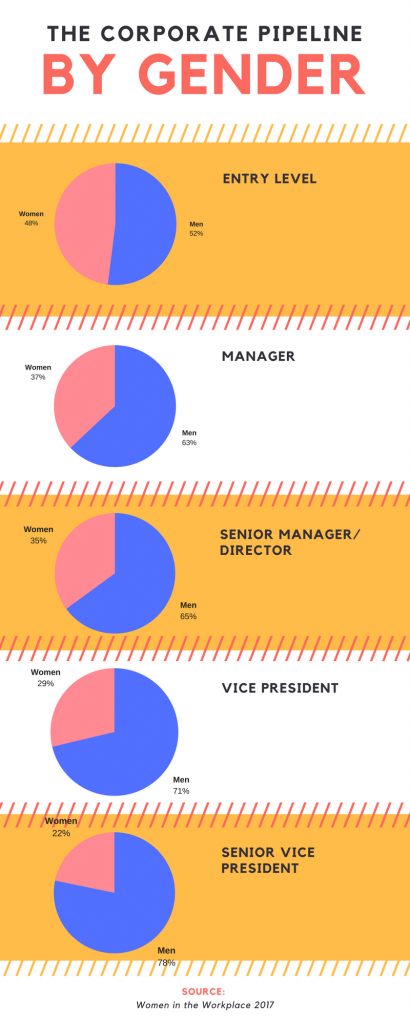In a nutshell: Even though women and men are represented equally at the entry level, fewer women than men are promoted.
There’s little doubt that women have come a long way in the workplace — but just how far have they come? Your answer to that depends on whether you’re a man or a woman.
According to “Women in the Workplace 2017,” a research report from consulting giant McKinsey & Company in partnership with advocacy group Lean In, men think women are faring better in the workplace than they are.
Consider this: At organizations where only 10 percent of women are in senior-level positions, 50 percent of men surveyed said that women are well represented in leadership.
- Nearly 60 percent of men said diversity was important to their company, versus 45 percent of women.
- And 63 percent of men said their company was taking strides to improve gender diversity, compared to 49 percent of women.
The fact is that women’s perceptions may be correct. There is an issue with gender equality at many organizations, and it begins with the pipeline for assignments and promotions.
The Pipeline for Gender Diversity
According to the report, women are hired and promoted at lower rates than men.
The situation doesn’t appear to be as much about asking for promotions as it may be a lack of access to development opportunities. The report says women don’t receive as much contact and advice from their managers as men do. The issue is more acute for women of color, who are less likely than their white peers to advance in the promotion pipeline.
What Organizations Can Do about It
The McKinsey/Lean In report includes a number of action steps that organizations can take to improve their gender diversity efforts.
Among the key takeaways:
- Build a business case for gender diversity. The research report found a correlation between advancement for women and performance. Average-performing companies are 18 percent less likely to promote women to management, while at top-performing companies, that number is 4 percent. In other words, closing the gender equality gap may be linked to better performance.
- Live your values. Companies are quick to publicize their commitment to gender diversity, but do the employees agree? The report found that 90 percent of companies claim to prioritize gender diversity, but only 50 percent of employees agree.
- Make the hiring and promotion processes fairer. There are some steps companies can make to ensure a diverse group of candidates is considered. One is to insist on a diverse candidate pool for positions, which may ensure that gender equality is addressed with each hiring and promotion opportunity.
- Measure results and make employees accountable. Collect the metrics that will allow you to set targets and measure results. The goal should never be to set quotas, but to provide opportunity and transparency. When the numbers don’t line up with messaging, you and your employees will know it’s time to adjust course and take action.







